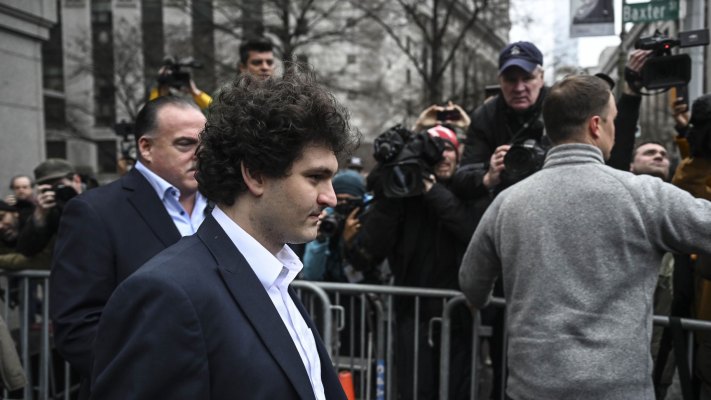It has been almost six months since FTX collapsed, and a lot has transpired since then, including executives being charged to industry businesses facing ripple effects from its demise.
At Consensus 2023, Anthony Scaramucci, former White House comms director and founder and managing partner of SkyBridge Capital, which invested in the exchange and Brett Harrison, founder and CEO of Architect and former FTX.US president, shared their experiences during FTX’s downfall and what life has been like since.
“It’s important to talk about it because if I can prevent one person from having that happen to them what happened to us then it’s worth it to me to talk about it,” Scaramucci said.
Harrison resigned from FTX in late September, weeks before it collapsed. In January, he launched his own company that makes trading infrastructure for large crypto investors. His startup raised $5 million and is backed by Coinbase Ventures, Circle Ventures and Scaramucci, among others.
SkyBridge Capital sold a 30% stake to FTX, weeks before the crypto exchange exploded. “We went from hero to zero in that transaction in about eight weeks,” Scaramucci said.
Neither Scaramucci nor Harrison have spoken to former FTX CEO Sam Bankman-Fried in months. Harrison said the last time they talked was when he resigned from FTX.US: He said he sent Bankman-Fried a text message telling him he was departing, to which Bankman-Fried replied with a red heart emoji.
But since the exchange’s collapse, Scaramucci said things are looking up for his firm, and that last quarter was “probably our best quarter in 10 years at our firm,” though he did not disclose further details. “At some point we’ll be able to buy [the 30% stake] back or frankly not buy it back,” Scaramucci said. “We’re sitting on ample cash and crypto on our balance sheet.”
When asked about their relationships with Sam, Scaramucci was blunt: “I liked Sam, I think what Sam did was obviously a betrayal, and unfortunately for Sam and his family, he disgraced his family and he’ll likely go to jail for a very long time.”
Bankman-Fried is facing 12 charges from U.S. prosecutors. The initial charges, unveiled in December, were filed in parallel actions with the U.S. Securities and Exchange Commission and Commodity Futures Trading Commission. He faces a slew of allegations that he led a “years-long fraud” designed to hide from FTX investors the fact that their funds were being redirected to SBF’s Alameda crypto hedge fund. He is also facing charges for misusing FTX customer funds. SBF is currently awaiting trial on a $250 million bail bond, secured against his parents’ property.
“I think Sam has set us back regulatorily,” Scaramucci said. “Again we’re here now, but go back to August or July last year, Sam was considered a white knight and was considered [to be] leading the industry. So the demise of Sam and exposure of fraud has embarrassed a lot of people in Washington.”
Leading up to the 2022 midterm elections, SBF gave more than $40 million to primarily Democratic-leaning PACs and politicians, yet he claimed in an interview with YouTube crypto reporter Tiffany Fong that he gave about an equal amount to Republican groups, much of which is not public.
Harrison noted that there were a number of “management issues that had to be resolved,” but that he didn’t see many red flags and “never lost faith in the business,” he said.
“While I was at FTX.US, we tried to establish as much separation as possible,” Harrison shared. The FTX.US exchange had separate bank accounts at places like Silvergate and Signature as well as separate hot crypto wallets that stored assets for customers. But even with those efforts, FTX as a whole was still under Bankman-Fried’s umbrella, Harrison said. “SBF was CEO of FTX and FTX.US … there was never going to be complete separation between the two.”
FTX.US also had separate staff on the legal and compliance side, and day-to-day operations felt “fairly normal,” he said. “Some of the aspects of the lack of documentation was definitely an issue and something we brought up a lot.”
Now, FTX is reportedly considering relaunching after recovering $7.3 billion in assets since filing for bankruptcy.
Whether the exchange can actually restart and succeed is yet to be determined, but both Scaramucci and Harrison are doubtful. “I think that’s an impossibility,” Scaramucci said, adding that the technology of the exchange can be sold or rebranded, but he “can’t see it restarting.”
“There’s a reason FTX grew so quickly,” Harrison said, pointing to the many institutional players who “loved” the product’s risk system (ironic), interface and APIs, among other things. But he, too, isn’t convinced that the FTX brand can live as it once did. “There’s value to salvage from there. Do I think it can be done under the brand of FTX? Absolutely not.”
